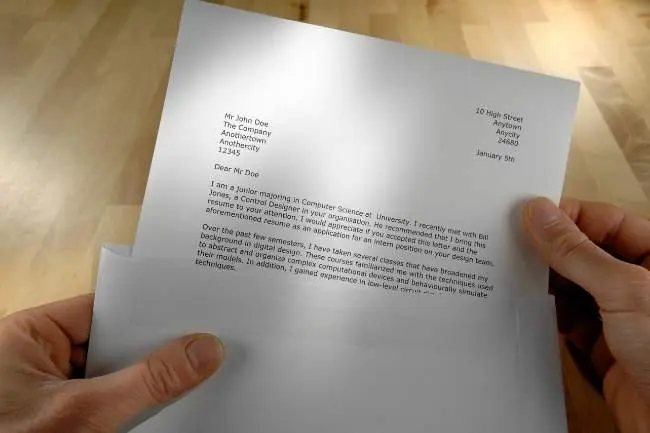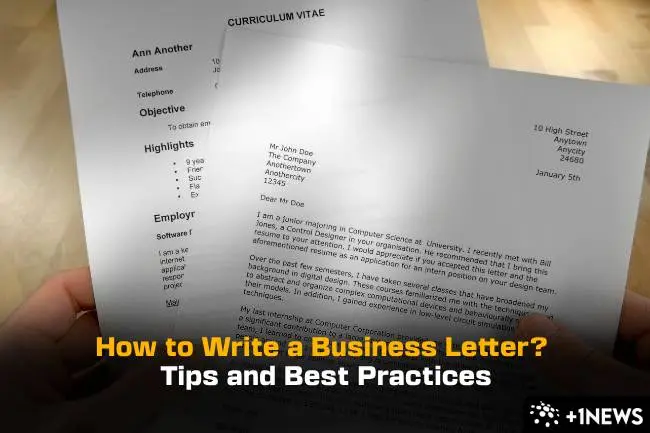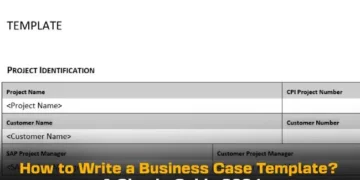In the professional world, knowing how to write a business letter is very important. Even though we use digital communication a lot, a well-written business letter is still a powerful way to communicate formally. It is important for making deals, making formal requests, or sharing important information.
A business letter makes the message clear and professional. So it is essential to know how to write a business letter including the correct format, examples of business letters, and how to use formal language to improve your business communication.
What is a Business Letter?
A business letter is a formal piece of correspondence used to communicate between companies or between a company and its customers, stakeholders, or other third parties.
Its purpose extends beyond mere communication, serving as a permanent written record and a tool of formal engagement. The strength of a business letter is in the clarity of information that it conveys professionally and clearly.
Types of Business Letters
Before we know how to write a business letter, it is important to know its types. Although business letters are written for a large variety of reasons, here are a few common types:

- Inquiry Letters: Used to ask for more information about a product or service.
- Sales Letters: Used to introduce a new product or service to potential customers, describing the features and benefits of the product as well as persuasive calls to action.
- Cover Letters: Used to send resumes or other documents when applying for a job, a cover letter presents the qualifications of the sender, as well as the reason for interest in the job.
Each of these calls for a slightly different style, but all are founded upon the same principles of precision, directness, and formality. Knowing what those differences are and how to negotiate them can greatly enhance your ability to be an effective communicator in the business environment.
Planning How to Write a Business Letter?
Before we delve into the structure of a business letter, it is necessary to consider the planning that goes into conducting effective business communication. Proper planning before the commencement of writing your letter ensures that it is not only professional in its demeanour but is focused and meaningful as well.
Understanding the Audience and the Purpose
The first step on the way to understanding how to write a business letter that works is to know clearly for whom you are writing the letter and what you are writing it for. Knowing for whom you are writing your letter enables you to match the tone and content and it ensures that your letter has an impact.
Are you writing to an existing business partner, a prospective client, or a professional body? Each of these would warrant a slightly different level of formality and content. The purpose for which you are writing a letter to someone will help structure your writing and content.
No matter if you are asking for something, giving information or replying to a question, make your purpose clear from the beginning. This will help you stay focused and include all the important details without going off-topic.
Gathering Necessary Information
Equally important is to have everything of relevance on the table before you start to write. This includes:

- Sender and Recipient Details: Try to have the correct titles, names, and addresses of both the sender and recipient. Mistakes in this regard can not only land your letter in the wrong people’s hands but also reflect bad attention to detail.
- Subject Matter: Know the facts, stats and data relevant to the discussion. These might include previous correspondence, related agreements or certain points which you have to cover in the letter.
The Anatomy of a Business Letter
A well-structured business letter is really the guts of good communication. This is what the makeup looks like:
1. Heading and Sender’s Address
Begin with your name or the name of your business and then the address. Typically, this is in the top left corner of the page. If you’re using a letterhead, your details are probably already included and no additional sender information is necessary.
2. Date and Recipient’s Address
Below the sender’s address, without skipping a line, write the date on which the letter was written. Below the date, add the recipient’s name, title, company, and address. This should be left-justified, so it’s a nice block of text that’s easy to read and also aesthetically pleasing.
3. Salutation
The salutation is where you greet the recipient by name and it should be as specific as possible. “Dear Mr./Ms. [Last Name],” followed by a colon, is standard and appropriate for most forms of business communication.
If you don’t know the recipient’s gender, use their full name or use a general greeting, such as “Dear [Position Title],” if specific names are not available.
4. Body
- Introduction: Get to the point of your letter quickly in the first paragraph. This sets the tone for what the letter is going to be about and the recipient knows what to expect from the outset.
- Main Content: Get to the meat of your communication. Use short, concise sentences and paragraphs to state your points. Several paragraphs are common here, but it could be only one, depending on the subject complexity.
- Conclusion: Wrap up your letter in a summary fashion by tying your main points together and suggesting any next steps or actions to be taken. This is your opportunity to ask for a response or to continue the conversation.
5. Complimentary Close
Your complimentary close should be of the same tone and level of formality as the rest of your letter. “Sincerely,” “Regards,” or “Best regards,” followed by a comma, are among the accepted forms.
6. Signature Block
Leave four spaces after the close in which to sign your name, then type your name, title, and company name directly below. If the letter will be sent by electronic means, you may insert a digital signature or simply type your name.
7. Enclosures
If you have enclosed any documents in addition to your letter, identify them by typing “Enclosures:” followed by a listing of the documents. This lets the reader know that there are other documents to which he or she should be looking and ensures that nothing is missed.
If you follow this plan you will not only learn how to write a business letter but your business letters will show that you are professional and care about communicating clearly. This way of writing helps you make strong and meaningful business letters that fit the people you’re writing to and what you want to achieve.
Formatting Your Business Letter
Knowing how to format a business letter is going to make it easy for you to communicate clearly and professionally with colleagues, clients, etc. The way in which your letter is laid out can influence how readable it is and the impression of professionalism your message makes. There are essentially three types of formats that are used when writing business letters: block, modified block, and semi-block.
1. Block Format
In a block format, all parts of the letter (heading, address, salutation, body, closing, and signature) begin at the left margin. There is no indentation and it is the easiest and most widely used structure in business writing. This format is particularly popular because it is incredibly neat in its appearance, as well as easy to read.
2. Modified Block Format
The modified block format positions the date and closing at the center or right of the page, while all other parts are at the left. This format is often used in fields of work that are more conservative. It adds a little visual interest and hierarchy to the letter, making it look a tiny bit different from the more simple block format.

3. Semi-Block Format
Semi-block is essentially the same as the modified block, except that paragraphs are indented, rather than left-justified. It is often used for more formal correspondence, lending a bit of tradition and respect to the letter.
4. Font and Spacing Recommendations
Choosing the right font and spacing is important to ensure that your letter is as readable as possible. Choose a professional and tidy font like Arial, Calibri, or Times New Roman and a font size between 10 and 12 points. The text should be single-spaced, with a double space between paragraphs. This makes the document easy to read and navigate, allowing the recipient to find their way around the content.
Writing the Content of a Business Letter
How to write a business letter? The act of writing the content of your business letter is not something that fills in the form of a letter. Rather, it is using the right language and the right structure to create an impact and get your message across.
Tips for Clear and Concise Writing
Here are some tips for learning how to write a business letter that should be concise and clear:
- Be Direct: Put the main point right in the first paragraph and add the context to that point in the paragraphs that follow.
- Use Simple Language: Avoid jargon and complicated words that make your letter difficult to read.
- Keep it Brief: Say as little as you need to. Lengthy letters can dilute your point as well as the reader’s interest.
Examples of Opening and Closing Sentences
- Opening Sentences:
- “I am writing to inquire about.”
- “Thank you for your consideration of.”
- “In response to your request, I am pleased to provide.”
- Closing Sentences:
- “Thank you for addressing this matter promptly.”
- “I look forward to your reply at your earliest convenience.”
- “Please feel free to contact me if you need additional information.”
Avoiding Common Pitfalls
- Avoid Passive Voice: Using active voice is more direct and therefore clear. For example, instead of writing “The documents are being sent,” write “I am sending the documents.”
- Steer Clear of Overly Complex Language: Use plain and simple language to guarantee that your letter is easy to understand by all readers.
- Be Careful with Tone: Your letter has to maintain a professional tone all through. Even if the subject is negative, the language used should be respectful and neutral in tone.
By following the above rules, you can write a business letter that not only looks professional but also says your message loud and clear. Bear in mind that a written business letter is a way to pass along information in a manner that supports the best standards in professionalism and courtesy that your business sector has to offer.
Common Mistakes to Avoid
How to write a business letter? While writing a business letter, some common pitfalls may distract from the clarity and professionalism of the message. Knowing these common mistakes can help to significantly improve the effectiveness of your communication.
Grammar and Punctuation Errors
Grammatical and punctuation errors can weaken the credibility of your business letter. It is necessary to reread your letter several times or use tools like Grammarly to pick up common mistakes. Small errors can create a large impact on the way your message is perceived and signal carelessness and a lack of attention to detail. It is the main step in learning how to write a business letter.
Overusing Jargon
Although the use of some jargon terms may be necessary, overusing them can confuse the recipient, particularly if they are not familiar with the terminology. Always strive to make it simple and clear in your choice of words so that the message can be easily accessed by all the readers.
Lengthy and Unclear Messages
A clear and concise message is more effective and shows respect for the reader’s time. Long and unclear messages may confuse the reader and lose the main message. Stick to the topic, use short paragraphs and bullet points if needed to increase readability and always state your letter’s purpose in the opening paragraph.
Conclusion
To sum it up, to know how to write a business letter, keep in mind the following important aspects:
- Follow a professional format, whether block, modified block, or semi-block style.
- Use simple and clear language and try to maintain a professional tone throughout.
- Make sure to be concise and to the point, avoiding unnecessary jargon and lengthy explanations.
- Take care of grammar and punctuation issues to maintain professionalism.
The role of practice is paramount when learning how to write a business letter. Writing letters regularly, even just for practice, can sharpen your skills and give you more confidence in writing your professional correspondence.
Sample of a Business Letter
The following is an example of how to write a business letter that already contains the above-mentioned elements:
James Peterson
Marketing Director
Peterson Marketing Solutions
123 Business Rd.
Business City, NY 12345
June 1, 2024
Ms. Sarah Johnson
Head of Procurement
Innovative Tech Gadgets
456 Vendor Blvd.
Tech City, CA 67890
Dear Ms. Johnson,
Subject: Proposal for Partnership on Upcoming Marketing Campaign
I am writing to propose a partnership between Peterson Marketing Solutions and Innovative Tech Gadgets for the upcoming launch of your latest product. Our team is experienced in the streamlined implementation of overall digital marketing strategies that foster better visibility and consumer engagement and I believe that it would be of great benefit to your new tech gadget launch.
We have before undertaken similar campaigns for previous major tech releases, which have culminated in an average increase of 50% in terms of sales for our clients in the first quarter after a launch. Our strategy adds a contemporary touch to marketing techniques that work traditionally to ensure broad market reach and effective response from consumers.
Should you be amenable to hearing more about our services and how we can help make your product launch a success, I would be very happy to schedule a meeting with you to discuss this further. We are very excited at the prospect of working with Innovative Tech Gadgets and be able to help add to your on-going success in the tech industry.
Thank you very much for considering this proposal. I hope to hear from you soon with a positive response and that we can discuss our potential partnership further.
Yours truly,
James Peterson
Marketing Director
Peterson Marketing Solutions
Enclosures:
- Case studies of past campaigns
- Brochure of services














